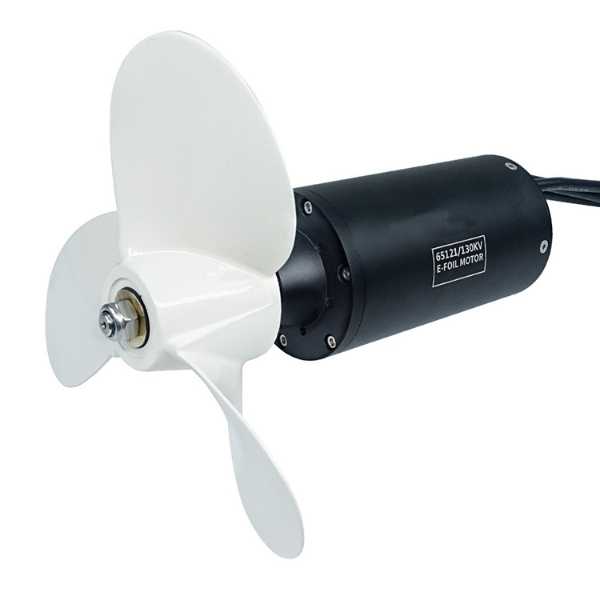

Brushless.com's 36V Brushless DC motors (BLDC) offer a wide range of potential and excellence in a variety of applications. As electric vehicles, industrial automation, drones and other modern technologies evolve, BLDC motors are becoming increasingly popular in scenarios requiring high efficiency, low maintenance and long life.BLDC motors rely on an electronic control system instead of a traditional mechanical commutator, which reduces mechanical friction and wear and tear, which allows them to far exceed the performance of traditional DC motors.Brushless.com's 36V BLDC motors provide a high power density, low noise and high efficiency solution for a wide range of applications in a variety of scenarios that require precise control and high torque. However, the design and optimization of 36V BLDC motors still faces a number of technical challenges, one of the most significant of which is how to select the right MOSFET to ensure that the motor operates efficiently while maintaining a high level of reliability. When selecting a MOSFET, its breakdown voltage (BVDSS) and conduction losses must be fully considered, especially under high-frequency switching and high-current loads, and how effectively these parameters are managed is critical to motor performance.
When selecting MOSFETs for Brushless.com's 36V BLDC motors, the most important thing to focus on in the circuit design is the MOSFET's breakdown voltage (BVDSS). Since transient voltages can occur in the operating environment of BLDC motors, the BVDSS of the selected MOSFET must be high enough to avoid breakdowns triggered by transient voltages or fault conditions. It is often recommended to select a MOSFET with a breakdown voltage higher than two-thirds of the operating voltage to ensure that the MOSFET is not exposed to voltages close to its rated breakdown voltage during motor operation. For example, in a 36V BLDC motor application, a MOSFET with a voltage rating of 60V or higher is typically selected to provide sufficient voltage margin to ensure motor reliability during high-frequency operation. In addition to this, another key factor affecting power loss is the switching loss of the MOSFET. the intrinsic parasitic input capacitance of the MOSFET needs to be charged and discharged during each switching process, so while the on-resistance (RDS(ON)) of the MOSFET decreases, the required gate charge (Qg) increases. While this has little effect in non-switching applications, the effect of Qg on efficiency increases significantly in high-frequency applications in BLDC motors. Therefore, choosing a MOSFET with a low Qg reduces the stress on the gate driver, which in turn reduces the temperature rise in motor operation and improves overall efficiency.
Another important parameter in Brushless.com's 36V BLDC motor design is the reverse transfer capacitance (Crss), also known as the Miller capacitance.Crss is the dynamic capacitance between the gate and drain of a MOSFET, and in a half-bridge configuration of a BLDC motor, Crss has a direct impact on dv/dt failures and false trigger events. dv/dt effects can cause the unexpected conduction of the MOSFET during switching, which results in problems such as high power consumption and overheating. Therefore, selecting MOSFETs with lower Crss can reduce the occurrence of these problems in high-frequency motor applications, especially in scenarios where 36V motors run at frequencies above 20kHz. In addition, for BLDC motor applications, the starting and blocking currents may be two to three times larger than the full load DC current, so the pulse leakage source current (Ids) or inrush current rating should also be fully considered when selecting the MOSFET.The current carrying capacity of the MOSFET must be high enough to cope with the high current impacts during motor starting and blocking, to ensure its stability under peak current and reliability at peak currents, thus extending the service life of the entire system.
In terms of efficiency-related parameters, Brushless.com's 36V BLDC motors require special attention to MOSFET junction temperature rise in high-temperature operating environments. BLDC motors are typically exposed to high ambient temperatures, especially in automotive and industrial applications, which makes junction temperature control of the MOSFETs an important design consideration. All parameters affecting efficiency, including the MOSFET's RDS(ON), package design, PCB layout, and thermal management, will determine the MOSFET's power loss and ultimately its junction temperature rise.RDS(ON) is the on-resistance of the MOSFET, which increases with temperature and directly affects the motor's conduction loss.
- Details
- 2 posts
- https://www.brushless.com/36v-bldc-motor
- Female
- Located in 1378 Madison Avenue, Apt 5B, New York, NY 10029
Family members
Warning: Undefined array key "user" in /home/ouptel/public_html/themes/sunshine/layout/timeline/content.phtml on line 862
Warning: Trying to access array offset on value of type null in /home/ouptel/public_html/themes/sunshine/layout/timeline/content.phtml on line 862
Fatal error: Uncaught TypeError: count(): Argument #1 ($value) must be of type Countable|array, bool given in /home/ouptel/public_html/themes/sunshine/layout/timeline/content.phtml:872 Stack trace: #0 /home/ouptel/public_html/assets/includes/functions_general.php(45): require() #1 /home/ouptel/public_html/sources/timeline.php(264): Wo_LoadPage() #2 /home/ouptel/public_html/index.php(699): include('/home/ouptel/pu...') #3 {main} thrown in /home/ouptel/public_html/themes/sunshine/layout/timeline/content.phtml on line 872
